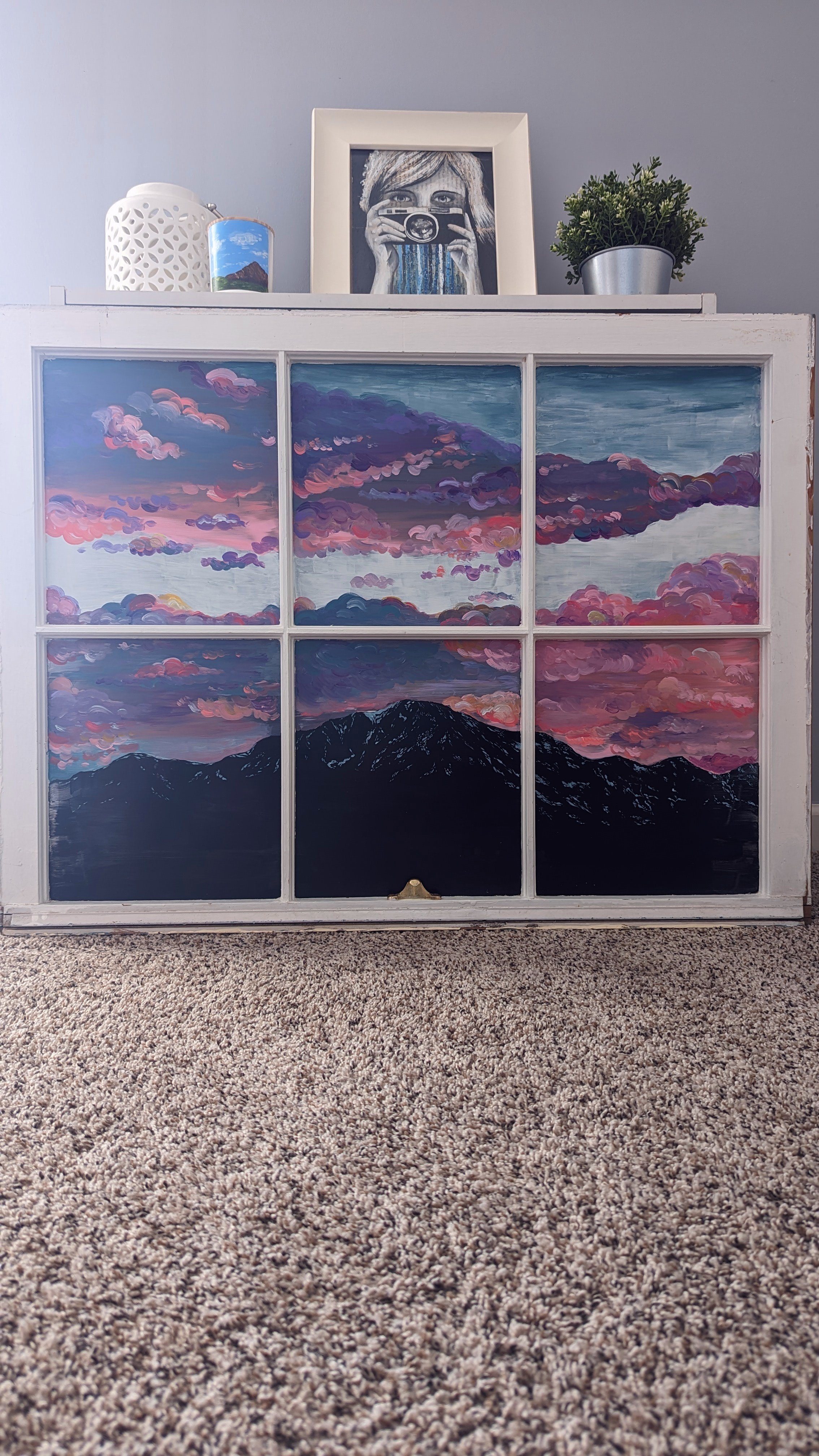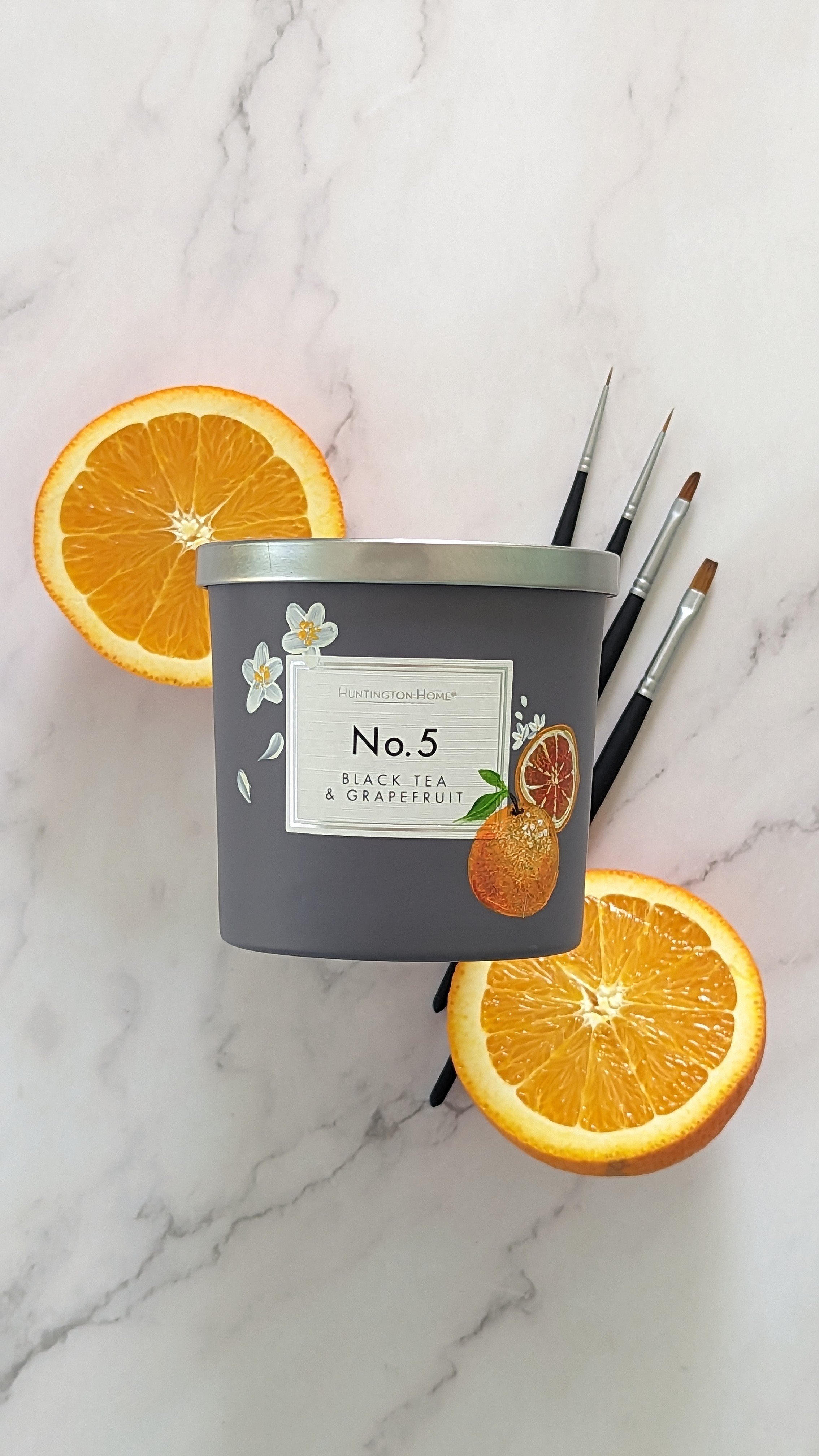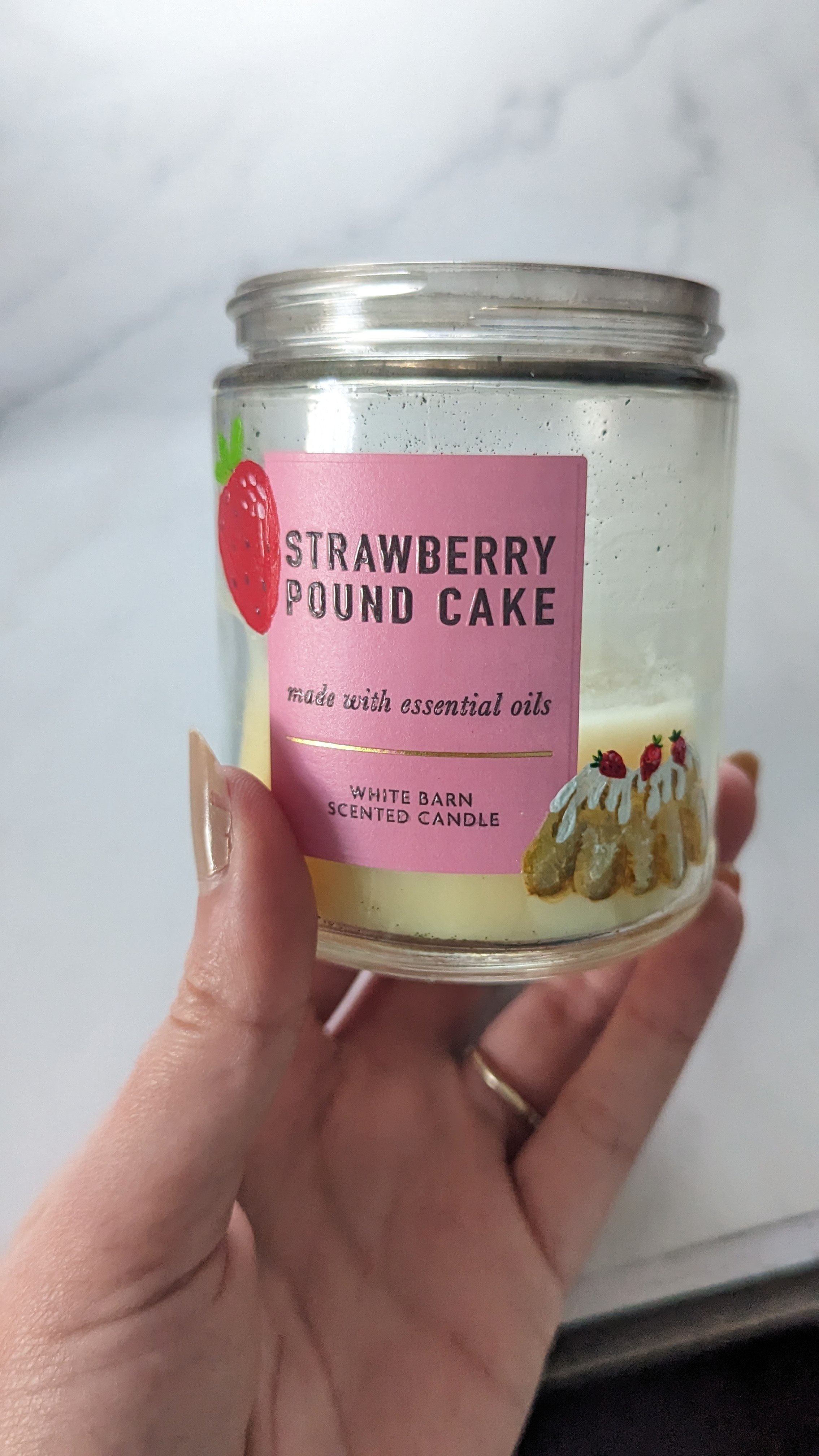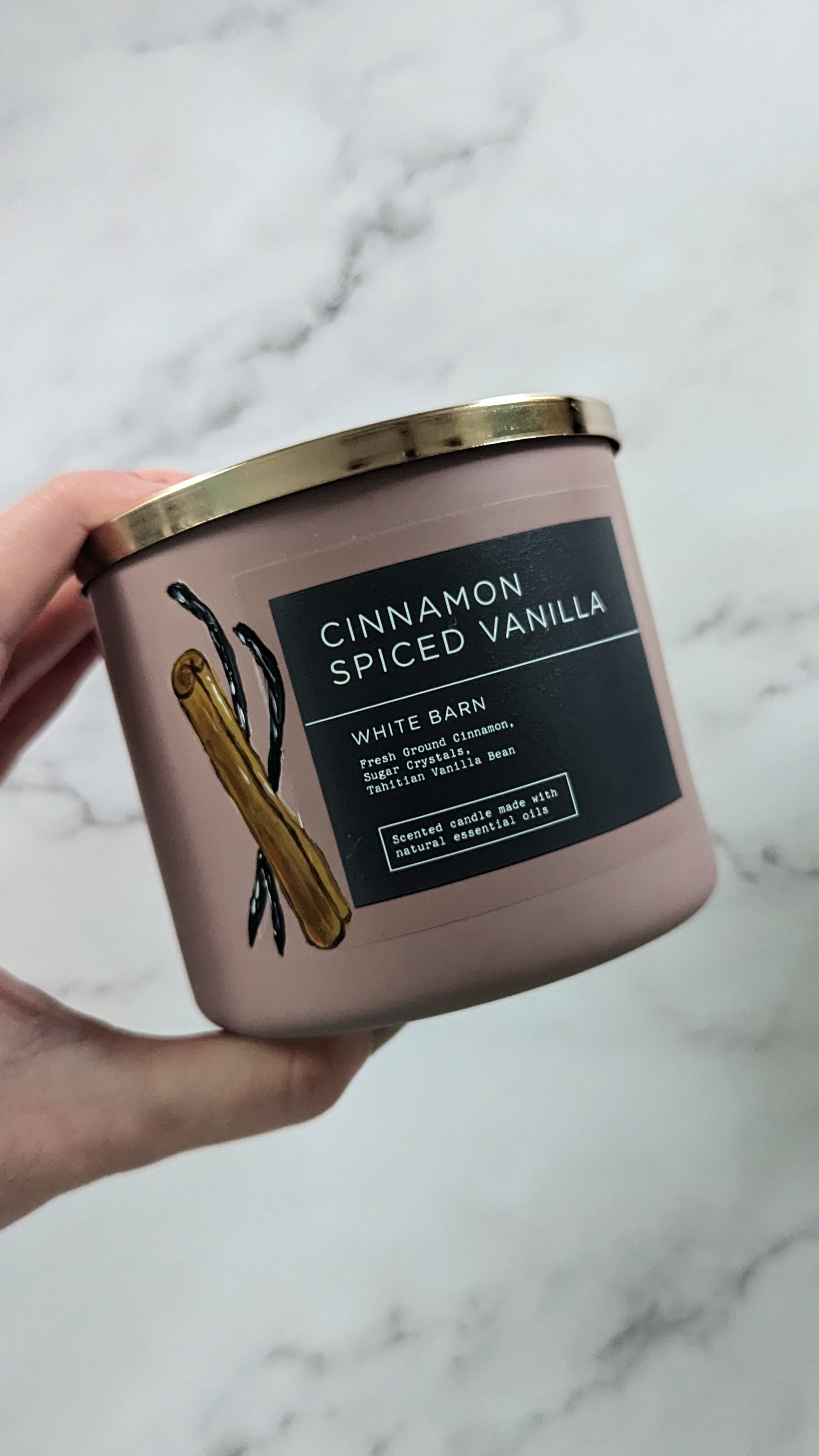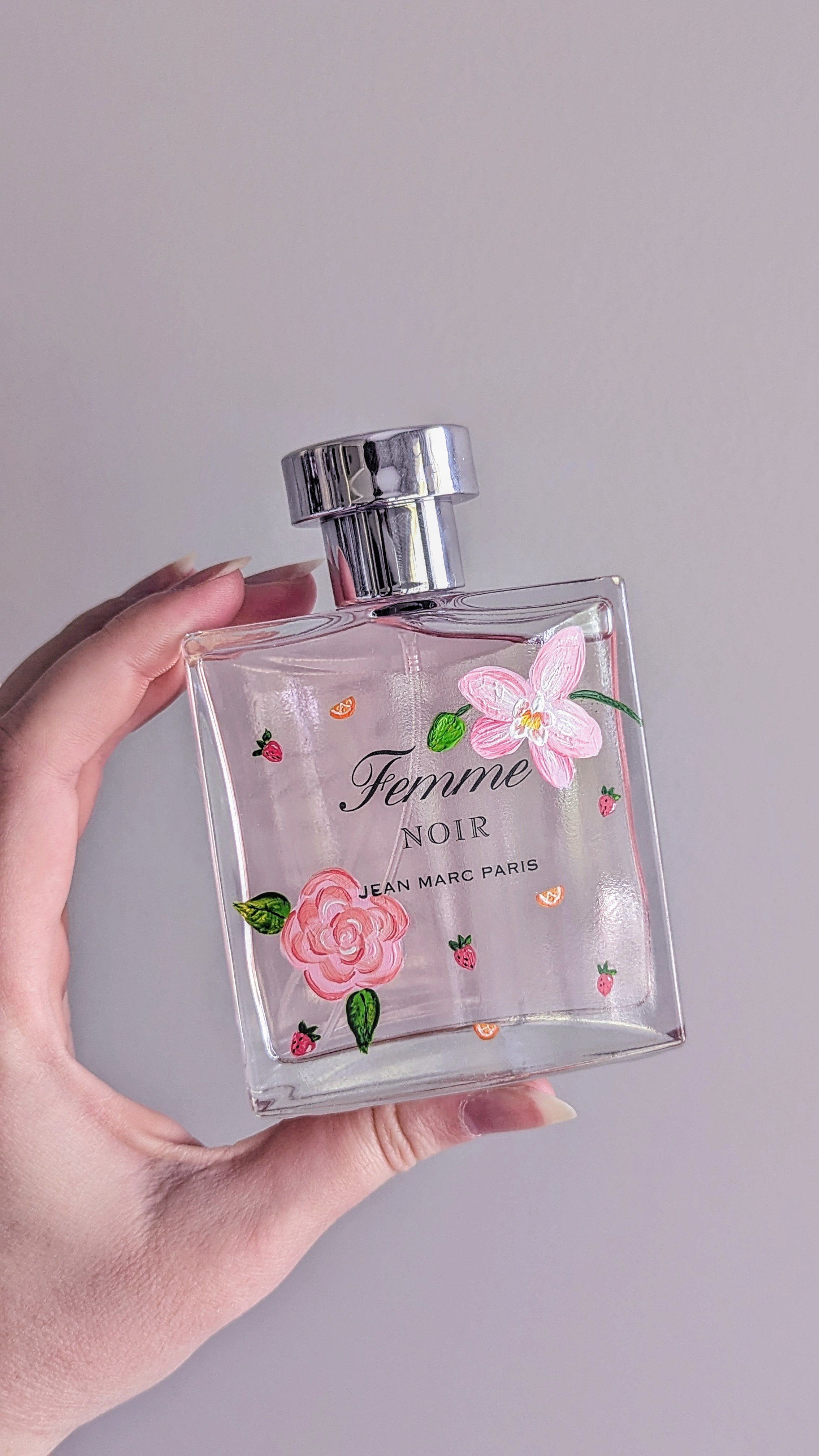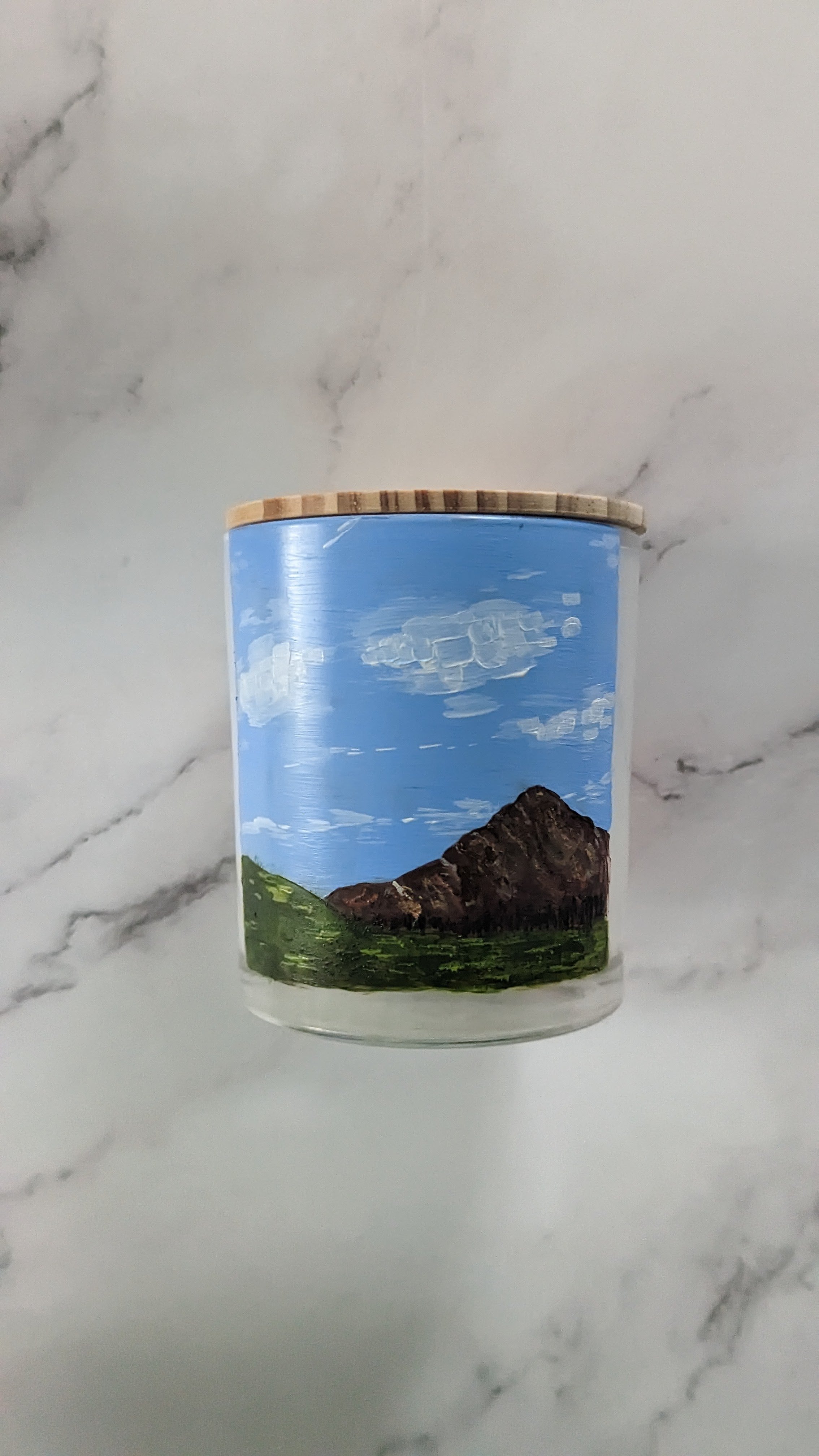What is Bottle Painting?
Bottle painting is a captivating art form that allows artists to transform ordinary bottles into stunning works of art. With a wide range of techniques and styles, bottle painting offers endless possibilities for creativity. It can be the simplest addition to delicately frame a bottle’s label to fully wrapped intricate designs and detailed landscapes. Each bottle goes from its standard manufactured self into its own unique personality, becoming a mesmerizing decor piece or a cherished gift. Bottle painting breathes new life into discarded objects, turning them into cherished artful treasures. Painting by hand is beautiful because of the subtle imperfections that come with being man-made over machine-manufactured.
“Now why is this not the official bottle?”
How is this different from “normal” painting?
If you have ever painted on a canvas using acrylic, that’s the most similar medium for use on bottles. The key difference is the item you are painting on. With a canvas, you have some texture on a flat surface and the acrylic paint goes on fairly smoothly and leaves very little transparency to the canvas. When painting on say a glass bottle, the challenge comes in with the paint doesn’t naturally want to adhere to the surface and will not get an even coverage the first swipe of paint. You will need to layer your painting in multiple layers. You will need to start with a base coat of your desired color or white if you are working on a dark surface to help your colors pop. Also, the paint you use matters. If you are using ordinary craft store acrylic paint, it will chip off rather quickly. Instead, you need to use specialty paints such as multi-surface paint, porcelain paint, glass paint, thick quality acrylic paint like Liquitex or Master’s Touch, or another specialty paint. These tend to cost more than your standard craft supply acrylic, especially the finer paints. Alternatively, finer quality paints will require fewer coats of coverage! It’s a balance of what your budget is and what you are willing to compromise on.
You also need to consider the curvature of the surface you are working on. Bottles come in all different shapes, sizes, and angles of curves. You will want to take into consideration the scale of the piece you paint as well as the perspective on a bottle. Spacing things too far apart may look nice individually, but doesn’t pair as well as you like to see the full effect. If you are planning a landscape wrap-around for a portion of the bottle, you will want to start with a background layer, pencil in the general shapes, and then take a step back and see if it looks right on the landscape. Or is your primary focal point on the curve, leaving the frame, and skewing the scale? Keep these things in mind as you plan your painting the image will be slightly distorted due to the curve of the item you paint on.
Some bottles are frosted and receive paint beautifully! The matte finish behaves much more similarly to canvas, but fixing your mistakes is not as easy. On a shiny or polished glass surface, you can wipe paint off while it is still wet with little to no residue left over, it may take a couple of passes to remove the paint but it should come off fairly easily. With frosted glass, the paint adheres much better and you will more than likely need to wait for the layer to fully dry to paint over it. The plus side to this is you can’t see the mistake on the other side of the bottle due to the frosted color! When painting in layers on shiny glass, you want to be sure the layer beneath has fully dried. If it is ever so slightly damp, the second layer you apply may end up pulling the paint off the glass getting an uneven coating and giving a spotty look. Ensure the layer is dry and you don’t apply too much pressure to the bottle as you paint the next layer. Each surface type has its pros and cons. These are all things to consider when choosing your item to paint on.
Can anyone pick it up and learn?
Absolutely! Everyone has an artist inside of them, you need to be willing to try something new and not expect perfection on your first try. It’s different than painting on a canvas, that’s for sure. I’ve been painting since I was little, but only just started learning how to paint on other surfaces this year! You just need the curiosity and desire to learn!
If you are someone who doesn’t want to be told what to paint or how to do it, buy some multi-surface paints and grab your nearest candle jar, spice bottle, or any other bottle you have around, and just play and have fun! Try new techniques, brush strokes, layers, colors, and mixing! Try adding a base coat versus without a base coat. Use a light color underneath vs the actual color. Do a color swatch on a sample jar so you don't have to worry about it being perfect. Paint your favorite flower, animal, pet, a photo from your last vacation, or just let the bottle tell you what to paint; the limit is your creativity!
Do you prefer guided instructions and having something specific to practice? There are courses out there for this! Like the Fundamentals of Bottle Painting (FBP) and Advanced (FBPA), both by Michelle Clemen & Telisa Roessein. These two courses are geared toward speed painting for live events. That doesn't mean if you aren't going into the live event industry you can't take these courses, these will just be simplified paintings that you can learn to paint quickly and precisely every time. Another set of courses is by Whitney Forbes of The Haute Press teaching the Fine Art of Bottle Painting. She has an Intro course as well as an Advanced course. The introduction course focuses on small paintings on the bottle, usually framing the label, adding accent fruits and florals, etc. The advanced course focuses on full-wrap bottle paintings, repeating patterns, and other advanced techniques. I have taken Whitney’s course and loved her teaching style and how she teaches a step-by-step process. Her art style is just gorgeous too! She provided loads of handouts with her favorite supplies, techniques, and some examples to work from. We worked through a series of 3-5 paintings per class and it was A LOT to take in, seriously. It required me to practice outside of class even though I am familiar with painting.
If you aren’t ready to spend money on a course, check out some YouTube videos on painting processes and techniques. Donna Dewberry is one of my favorite artists and she has a channel full of tips and tricks for one-stroke painting that can be applied to bottle painting! She will typically paint on paper or canvas over glassware, but that doesn’t mean you aren’t able to transfer skills! Practice on both mediums see the differences for yourself and learn what pressures you can apply to the surface you are working on. Learn from multiple artists. Each will have their favorite techniques they like to use over others. Some prefer outlines, some will go outline-free. Some like the artsy blend of impressionist work while others work photorealistically and blend smoothly. Find artists you look up to, learn from them, and apply your favorite techniques they teach to your own artwork.
Is this limited to just bottles?
Absolutely not! That’s the beauty of multi-surface paint, it can be used on a variety of surfaces such as glass, plastic, canvas (obviously), fabric, metal, and even leather surfaces can be painted on! A perfect example is this vintage window frame with a stunning sunset view over the mountain! I took this photo on a vacation last year and have loved the colors since. I used my phone camera so the quality wasn’t what I wanted for a photo print. I was thinking of doing a canvas painting like usual, but I wanted to stretch myself and see if I could make it more special somehow. I’ve had this old window frame hiding in my craft room for years and I wanted to use it for something totally unique. I think this frame was made for this painting and that’s why it’s been empty and alone for so long, but now it has a new purpose in life! It’s about to be proudly hung in my newly painted office that was inspired by this painting!
Would you rather have somebody else paint for you?
That’s what I’m here for! I do live event painting as well as in-studio commissions. This is a perfect event for customizing perfumes, candles, champagne, and so much more! Bottle painting serves as live entertainment too! Guests enjoy watching live painting just as much as the final result they get to take home! Do you want a unique experience for your guests on your wedding day? Add bottle painting to your wedding favors that complement your wedding theme! Want something to gift to a loved one? Grab your vision, a photograph, and inspiration and I can help you make an ordinary gift into something extraordinary. No matter what it is, I’m here to help you take that vision from imagination to reality. Ready to transform ordinary objects into pieces of art? Contact me here and let’s make it a reality!





